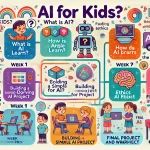
ChatGPT in Scientific Research: Recent Developments, Future Directions, and Challenges
December 5, 2023Introduction: Unlocking the Potential of ChatGPT in Scientific Research
In the realm of scientific research, the integration of advanced technologies has become instrumental in reshaping traditional methodologies. One such transformative tool is ChatGPT, a powerful language model developed by OpenAI. This introduction aims to provide a brief overview of ChatGPT, its remarkable capabilities, and the burgeoning interest it has sparked among researchers and scientists worldwide.
ChatGPT: A Brief Overview
ChatGPT is a state-of-the-art language model built upon the Generative Pre-trained Transformer (GPT) architecture. Trained on a vast corpus of diverse text data, ChatGPT exhibits an exceptional ability to understand and generate human-like text in response to prompts. Its versatility lies in its capacity to engage in dynamic and coherent conversations across a spectrum of topics, making it a valuable tool for researchers seeking natural language interaction with machine learning models.
Capabilities Reshaping Scientific Inquiry
The capabilities of ChatGPT extend far beyond mere conversation. Researchers are increasingly leveraging ChatGPT to aid in tasks such as literature review, data analysis, hypothesis generation, and even collaborative problem-solving. Its natural language understanding and generation prowess enable it to comprehend complex scientific queries and provide nuanced responses, demonstrating its potential to be a game-changer in scientific research workflows.
Growing Interest in ChatGPT within the Scientific Community
The scientific community has shown a remarkable surge in interest and enthusiasm for integrating ChatGPT into various research endeavors. Researchers and scientists are exploring its applications across disciplines, from biology and chemistry to physics and computer science. The prospect of having an intelligent, conversational assistant that can understand and generate scientific text has captivated the imagination of those at the forefront of innovation.
Addressing Research Challenges with ChatGPT
As researchers grapple with the vastness of scientific literature, data analysis complexities, and the need for innovative problem-solving, ChatGPT emerges as a tool poised to address these challenges. Its ability to sift through extensive datasets, offer insights, and engage in iterative discussions holds the potential to streamline research processes and catalyze new discoveries.
In the sections that follow, we will delve into specific aspects of ChatGPT’s role in scientific research, exploring its applications in various domains and the transformative impact it brings to the table. Join us on a journey through the exciting intersections of language models and scientific inquiry, where ChatGPT is unlocking new possibilities and reshaping the way we approach research challenges.
Recent Developments in ChatGPT for Scientific Research
In the ever-evolving landscape of artificial intelligence, ChatGPT has undergone significant advancements, particularly in its application to scientific research. Recent developments have focused on enhancing ChatGPT’s ability to understand and generate scientific text, empowering researchers in various domains. Below, we discuss key strides in ChatGPT’s capabilities, specifically its prowess in summarizing complex scientific concepts, analyzing and interpreting scientific data, and generating new hypotheses and research questions.
1. Summarization of Complex Scientific Concepts and Theories:
Advancements: Recent updates to ChatGPT have brought about improvements in its summarization capabilities, allowing it to distill complex scientific concepts and theories into concise and comprehensible summaries.
Impact:
- Accelerated Literature Review: Researchers can efficiently navigate and review vast amounts of scientific literature, obtaining succinct summaries of intricate theories and concepts.
- Knowledge Synthesis: ChatGPT aids in synthesizing information from diverse sources, facilitating a holistic understanding of complex scientific topics.
2. Analysis and Interpretation of Scientific Data:
Advancements: ChatGPT’s latest developments include enhancements in its data analysis and interpretation skills, enabling it to derive insights from scientific datasets and provide meaningful contextual interpretations.
Impact:
- Data-driven Decision Support: Researchers can leverage ChatGPT to analyze experimental results, identify patterns, and make informed decisions based on the interpreted data.
- Contextual Understanding: The model’s improved ability to interpret scientific data fosters a deeper understanding of experimental outcomes and their implications.
3. Generation of New Hypotheses and Research Questions:
Advancements: Recent updates have equipped ChatGPT with the capability to generate novel hypotheses and research questions, pushing the boundaries of its creative problem-solving abilities.
Impact:
- Ideation Support: Researchers can engage with ChatGPT to brainstorm and generate innovative hypotheses, fostering a collaborative and exploratory approach to scientific inquiry.
- Research Question Formulation: The model aids in the formulation of relevant and insightful research questions, contributing to the generation of impactful research agendas.
Cross-Cutting Advancements:
1. Contextual Understanding: Recent refinements in ChatGPT’s architecture have improved its contextual understanding, allowing it to generate responses that consider the broader context of scientific discussions.
2. Domain-Specific Fine-Tuning: Researchers now have the option to fine-tune ChatGPT for specific scientific domains, tailoring its capabilities to align more closely with the specialized language and nuances of particular fields.
3. Collaboration Features: ChatGPT has evolved to support collaborative features, enabling researchers to engage in dynamic discussions, idea exchanges, and collaborative problem-solving within the model’s conversational interface.
Future Implications: These developments in ChatGPT’s scientific capabilities hold significant promise for researchers, opening new avenues for efficient knowledge synthesis, data analysis, and hypothesis generation. As the model continues to evolve, it stands poised to become an indispensable tool in the scientific researcher’s toolkit, offering advanced natural language understanding and generation capabilities for diverse research applications.
Examples of ChatGPT in Scientific Research:
- Assisting in Literature Reviews and Data Analysis:
Scenario: A team of biomedical researchers is tasked with conducting a comprehensive literature review to identify relevant studies on a specific disease. Additionally, they need assistance in analyzing diverse datasets related to the disease’s genetic factors.
ChatGPT’s Role: ChatGPT is employed to assist in the literature review process by summarizing key findings from numerous research papers, providing concise insights into genetic markers and potential therapeutic targets. Simultaneously, the model aids in data analysis, extracting patterns and relationships from complex datasets, facilitating a more nuanced understanding of the disease’s genetic landscape.
- Developing New Research Methodologies:
Scenario: Environmental scientists are exploring innovative methodologies for studying the impact of climate change on biodiversity. They seek a fresh perspective on designing research protocols that integrate advanced technologies and methodologies.
ChatGPT’s Role: ChatGPT collaborates with the research team to generate ideas for novel research methodologies. It proposes the integration of satellite imagery analysis, machine learning algorithms, and citizen science initiatives to create a comprehensive and technologically advanced approach. By engaging in a conversational exchange, ChatGPT helps refine and iterate on these ideas, contributing to the development of a cutting-edge research methodology.
- Generating Creative Research Ideas:
Scenario: A team of physicists is exploring possibilities for innovative experiments to test fundamental theories in quantum mechanics. They seek unconventional and creative research ideas to push the boundaries of their field.
ChatGPT’s Role: ChatGPT serves as a brainstorming partner, generating a diverse range of creative research ideas. It suggests experiments involving quantum entanglement, time dilation effects, and unconventional particle interactions. Through iterative discussions, ChatGPT sparks new perspectives and directions for the physicists, inspiring them to explore uncharted territories within the realm of quantum mechanics.
- Facilitating Cross-Disciplinary Collaboration:
Scenario: Researchers from biology and computer science are collaborating on a project that involves analyzing large-scale genomic data. They need a platform that facilitates effective communication and collaboration between team members from different disciplines.
ChatGPT’s Role: ChatGPT is integrated into the collaborative platform, providing a natural language interface for researchers to discuss and analyze genomic data. It assists in translating complex biological concepts into terms understandable to computer scientists and vice versa, fostering seamless communication and collaboration. The model contributes to a more integrated and interdisciplinary approach to the research project.
These examples illustrate the versatility of ChatGPT in scientific research, showcasing its ability to contribute to literature reviews, data analysis, methodology development, and the generation of creative research ideas. By leveraging the natural language capabilities of ChatGPT, researchers can enhance their workflows, overcome challenges, and explore new frontiers in their respective fields.
Future Directions of ChatGPT in Scientific Research
As ChatGPT continues to evolve, its potential to revolutionize scientific research is increasingly apparent. The model’s natural language capabilities hold promise in automating tedious tasks, fostering interdisciplinary collaboration, and accelerating the pace of scientific discovery. Here, we explore the envisioned future directions where ChatGPT could play a transformative role in the realm of scientific inquiry.
1. Automation of Tedious Research Tasks:
Envisioned Scenario: Imagine a future where ChatGPT is seamlessly integrated into research workflows, automating routine and time-consuming tasks that traditionally demand significant human effort.
Potential Impact:
- Literature Review Automation: ChatGPT could efficiently scan and summarize vast amounts of scientific literature, providing researchers with concise insights and relevant information.
- Data Preprocessing: The model might assist in automating data cleaning, preprocessing, and initial analysis, streamlining the early stages of research projects.
- Documentation and Reporting: ChatGPT could generate detailed reports, documentation, and summaries, allowing researchers to focus more on the interpretation of results and the formulation of hypotheses.
2. Facilitation of Interdisciplinary Collaboration:
Envisioned Scenario: In the future, ChatGPT could serve as a dynamic platform for fostering collaboration among scientists from different disciplines, breaking down language barriers and facilitating effective communication.
Potential Impact:
- Cross-Disciplinary Communication: ChatGPT could assist researchers in different fields to understand and communicate complex concepts, bridging the gap between disciplines and encouraging cross-disciplinary collaboration.
- Ideation Workshops: The model might facilitate virtual ideation workshops, where scientists from diverse backgrounds collaboratively generate innovative research ideas and methodologies.
- Real-Time Collaboration: ChatGPT’s conversational capabilities could enable real-time collaboration, allowing researchers to discuss findings, share insights, and collectively problem-solve in a seamless and efficient manner.
3. Acceleration of Scientific Discovery:
Envisioned Scenario: In the future, ChatGPT could be a catalyst for accelerating the pace of scientific discovery by assisting researchers in generating hypotheses, exploring unconventional ideas, and rapidly iterating on research methodologies.
Potential Impact:
- Hypothesis Generation: ChatGPT could contribute to the rapid generation of hypotheses by exploring vast datasets, identifying patterns, and proposing novel associations that may have been overlooked.
- Exploration of Unconventional Ideas: The model might inspire researchers to explore unconventional and high-risk ideas that could lead to groundbreaking discoveries.
- Iterative Experiment Design: ChatGPT could assist researchers in iteratively designing experiments, refining methodologies, and adapting approaches based on real-time feedback and analysis.
Ethical Considerations and Responsible Use:
It is essential to acknowledge the ethical considerations and potential biases associated with the use of AI models like ChatGPT in scientific research. Ongoing efforts to ensure transparency, fairness, and responsible use of these tools are imperative to address concerns related to bias, data privacy, and unintended consequences.
As ChatGPT continues to advance, its integration into scientific research holds immense potential to reshape traditional practices, automate routine tasks, foster collaboration, and expedite the pace of scientific discovery. While realizing these future directions, it is crucial to approach the application of AI in research with ethical considerations, ensuring responsible use and the positive advancement of scientific knowledge.
Ethical Implications of Using ChatGPT in Scientific Research
As ChatGPT becomes increasingly integrated into scientific research, several ethical considerations must be addressed to ensure responsible and transparent use of this technology. Key concerns revolve around the accuracy and reliability of ChatGPT’s outputs, maintaining transparency in its role within scientific studies, and preventing potential misuse for malicious purposes.
1. Ensuring the Accuracy and Reliability of ChatGPT’s Outputs:
Ethical Consideration: The accuracy and reliability of ChatGPT’s outputs are paramount in scientific research, where precision is crucial for generating trustworthy findings.
Mitigation Strategies:
- Validation and Verification: Researchers should validate ChatGPT’s responses against established scientific knowledge to ensure accuracy.
- Human Oversight: Incorporating human oversight in the interpretation of ChatGPT’s outputs can help catch inaccuracies and prevent the propagation of misinformation.
- Continuous Improvement: Regularly updating and fine-tuning ChatGPT based on feedback and emerging scientific knowledge contributes to enhancing its accuracy and reliability.
2. Maintaining Transparency About the Role of ChatGPT in Scientific Studies:
Ethical Consideration: Clear communication regarding ChatGPT’s role in scientific studies is crucial to maintaining transparency and preventing potential misinterpretations.
Mitigation Strategies:
- Disclosures in Publications: Researchers should explicitly disclose the involvement of ChatGPT in the research process in scientific publications and communications.
- Methodology Descriptions: Detailed descriptions of how ChatGPT was utilized, its limitations, and its contributions should be included in research methodology sections.
- Open Communication: Openly communicating the limitations and strengths of ChatGPT fosters transparency and helps the scientific community and the public understand its role in the research.
3. Preventing the Misuse of ChatGPT for Malicious Purposes:
Ethical Consideration: The powerful capabilities of ChatGPT bring forth concerns about potential misuse, such as generating misleading information or biased outputs.
Mitigation Strategies:
- Ethical Guidelines: Establishing and adhering to ethical guidelines for the use of ChatGPT in research helps prevent intentional misuse.
- Bias Detection and Mitigation: Implementing measures to detect and mitigate biases in ChatGPT’s responses, particularly in sensitive research areas, is essential.
- Security Measures: Ensuring secure access and use of ChatGPT to prevent unauthorized individuals or entities from exploiting its capabilities for malicious purposes.
Ongoing Ethical Considerations:
- Bias and Fairness: Continuous efforts are required to identify and address biases in ChatGPT’s training data, algorithms, and outputs to ensure fairness in scientific research applications.
- Informed Consent: If ChatGPT is used in studies involving human subjects, obtaining informed consent that includes an explanation of its role is essential.
- Public Engagement: Engaging with the public and the scientific community in discussions about the ethical use of ChatGPT can provide valuable insights and foster accountability.
By proactively addressing these ethical considerations, researchers and developers can contribute to the responsible and ethical integration of ChatGPT in scientific research, ensuring that the technology serves as a valuable and trustworthy tool in advancing knowledge and discovery.
Challenges and Barriers to ChatGPT’s Adoption in Scientific Research
While ChatGPT presents promising capabilities in scientific research, several challenges and barriers must be acknowledged and addressed to facilitate its effective adoption within the scientific community.
1. Susceptibility to Biases and Errors:
Challenge: ChatGPT, like many AI models, is susceptible to biases present in its training data. Biases may emerge in the form of skewed language, cultural biases, or inherent inaccuracies within the training corpus.
Mitigation Strategies:
- Diverse Training Data: Efforts should be made to ensure that ChatGPT is trained on a diverse dataset that accurately represents the various perspectives and nuances present in scientific literature.
- Bias Detection and Correction: Implementing mechanisms for detecting and correcting biases within ChatGPT’s responses can mitigate the impact of unintentional biases in scientific contexts.
2. Lack of Interpretability:
Challenge: ChatGPT’s decisions and responses often lack interpretability, making it challenging for researchers to understand the reasoning behind specific outputs. This lack of transparency can be a barrier to trust and acceptance.
Mitigation Strategies:
- Explainable AI Techniques: Research into explainable AI techniques can contribute to making ChatGPT’s decision-making processes more transparent and interpretable.
- Human-in-the-Loop: Incorporating human experts in the loop, especially for critical decisions, can provide additional context and enhance the interpretability of ChatGPT’s outputs.
3. Reliance on Large Amounts of Data:
Challenge: The training of ChatGPT relies on vast amounts of data, which may not always be readily available in certain scientific domains. Accessing and curating sufficiently diverse and specialized datasets can pose challenges.
Mitigation Strategies:
- Domain-Specific Fine-Tuning: Fine-tuning ChatGPT on domain-specific datasets can enhance its performance and relevance to scientific research in specific fields.
- Collaborative Data Sharing: Encouraging collaborative efforts for sharing anonymized and ethically sourced datasets can address the scarcity of data in certain scientific domains.
Ongoing Considerations:
- Ethical Use and Bias Monitoring:
- Continuous monitoring for biases and ethical considerations in ChatGPT’s responses is essential, and mechanisms for regular updates should be established.
- User Education and Awareness:
- Researchers using ChatGPT should be educated about its limitations, potential biases, and the need for critical evaluation of its outputs.
- Interdisciplinary Collaboration:
- Promoting collaboration between AI specialists and domain experts is crucial for addressing challenges and tailoring ChatGPT to the specific needs of diverse scientific disciplines.
- Regulatory Compliance:
- Ensuring that the use of ChatGPT aligns with existing regulations and ethical guidelines for scientific research is imperative.
While ChatGPT holds immense potential for scientific research, addressing these challenges requires a collaborative effort from researchers, developers, and ethicists. By systematically mitigating biases, improving interpretability, and finding creative solutions for data challenges, ChatGPT can become a valuable and trusted tool in the scientific community’s arsenal.
Strategies for Overcoming Challenges in ChatGPT Adoption in Scientific Research
1. Developing More Robust and Transparent ChatGPT Models:
Strategy: Invest in research and development efforts to enhance the robustness and transparency of ChatGPT models.
Sub-strategies:
- Explainable AI Techniques:
- Explore and implement state-of-the-art explainable AI techniques to enhance the transparency of ChatGPT’s decision-making processes.
- Bias Detection and Correction:
- Develop and integrate advanced bias detection and correction mechanisms to reduce and rectify biases present in ChatGPT’s responses.
- Diverse Training Data:
- Curate diverse and representative training datasets, ensuring that the data used to train ChatGPT encompasses various scientific disciplines and perspectives.
- Iterative Model Refinement:
- Implement iterative refinement processes that involve continuous evaluation, feedback collection, and model updates to improve robustness over time.
2. Incorporating Human Oversight into the Research Process:
Strategy: Integrate human experts into the research process to provide oversight and enhance interpretability.
Sub-strategies:
- Human-in-the-Loop Systems:
- Establish human-in-the-loop systems, especially for critical decisions, where human experts can review and validate ChatGPT’s outputs.
- Collaborative Problem-Solving:
- Encourage collaborative problem-solving, where human researchers work alongside ChatGPT to collectively address research challenges and provide context.
- Ethics Review Boards:
- Create ethics review boards or committees involving both AI specialists and domain experts to evaluate and ensure the ethical use of ChatGPT in research.
3. Educating Scientists About the Strengths and Limitations of ChatGPT:
Strategy: Develop educational programs and resources to inform scientists about the capabilities, limitations, and potential biases associated with ChatGPT.
Sub-strategies:
- Training Workshops:
- Conduct training workshops and seminars for scientists to familiarize them with ChatGPT, its applications, and the nuances of working with AI models in research.
- Documentation and Guidelines:
- Provide comprehensive documentation and guidelines that clearly outline the strengths, limitations, and best practices for using ChatGPT in scientific studies.
- Case Studies and Examples:
- Share case studies and examples showcasing successful applications of ChatGPT in research, along with instances where human oversight and critical evaluation were crucial.
- Continuous Updates:
- Establish channels for continuous communication and updates, keeping scientists informed about advancements in ChatGPT, ethical considerations, and ongoing efforts to address limitations.
Ongoing Considerations:
- Interdisciplinary Collaboration:
- Foster collaborative initiatives between AI specialists and domain experts, encouraging ongoing dialogue and collaboration to tailor ChatGPT for diverse scientific domains.
- Public Engagement:
- Engage with the broader scientific community through conferences, webinars, and forums to foster discussion, share experiences, and gather insights on using ChatGPT in research.
- Regulatory Compliance:
- Work closely with regulatory bodies and organizations to ensure that the use of ChatGPT aligns with existing regulations and ethical guidelines governing scientific research.
By implementing these strategies, researchers can navigate the challenges associated with ChatGPT’s adoption in scientific research, fostering a responsible and effective integration of this technology into the scientific workflow.
Conclusion
In conclusion, ChatGPT stands as a transformative force in scientific research, offering unprecedented opportunities to streamline communication, automate tasks, and contribute to knowledge synthesis. Its natural language understanding and generation capabilities have already showcased their potential across various scientific domains, from literature reviews to data analysis and hypothesis generation.
The growing interest among researchers and scientists underscores the significance of integrating ChatGPT into the scientific toolkit. The recent developments in its ability to understand and generate scientific text, coupled with practical examples of its applications in literature reviews, methodology development, and idea generation, highlight the tangible benefits it brings to the research landscape.
However, the journey towards fully realizing the potential of ChatGPT in scientific research is not without its challenges. Addressing issues related to biases, interpretability, and data reliance requires ongoing research, collaboration, and a commitment to ethical practices. Developing more robust and transparent ChatGPT models, incorporating human oversight, and educating scientists about the technology’s strengths and limitations are essential strategies in overcoming these challenges.
As the scientific community embraces ChatGPT, it is imperative to emphasize the need for continuous research and development. This ongoing effort ensures that ChatGPT evolves responsibly, meeting the ethical standards expected in scientific research. By fostering collaboration, transparency, and a commitment to ethical use, ChatGPT has the potential to revolutionize the way scientific inquiry is conducted, accelerating discoveries and advancing knowledge across diverse domains.
In the dynamic landscape of artificial intelligence, ChatGPT stands at the forefront of a new era in scientific research. With careful consideration, responsible use, and a dedication to refining its capabilities, ChatGPT paves the way for a future where the synergy between human expertise and AI-driven assistance propels scientific discovery to unprecedented heights.


















